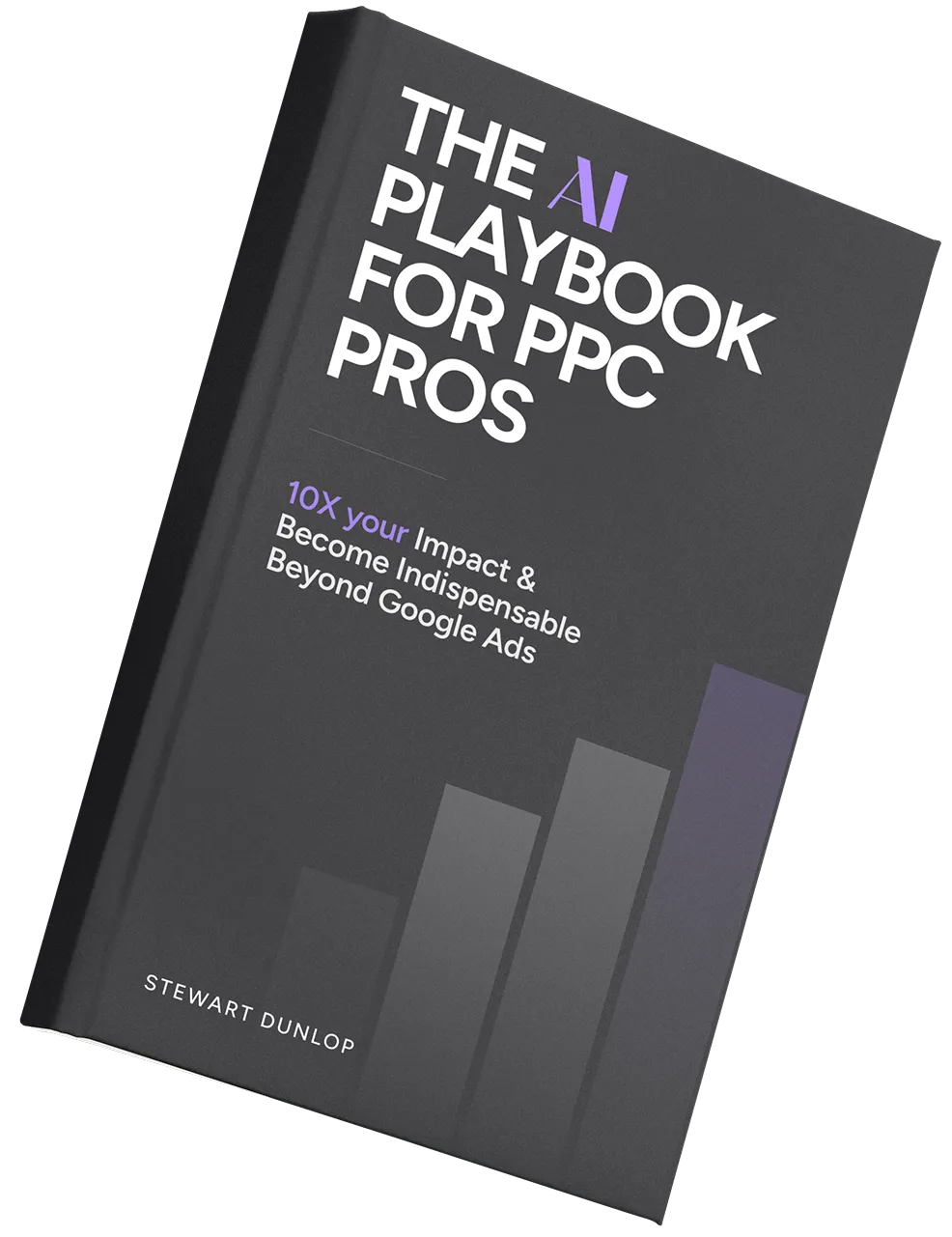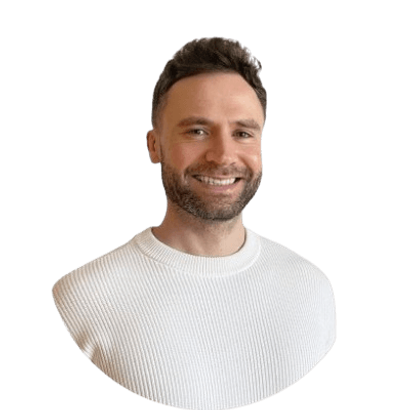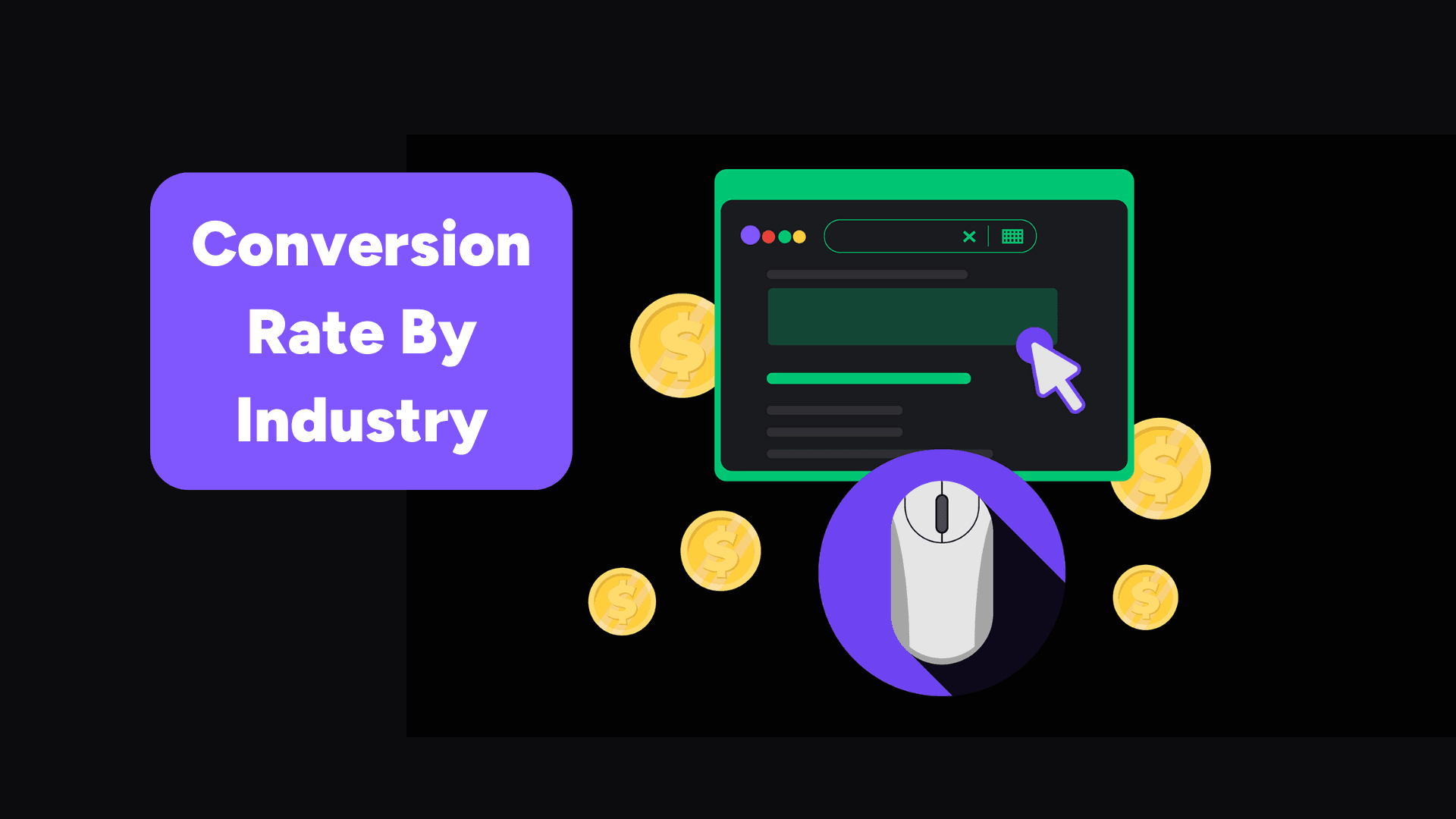
Improving your PPC conversion rate is like printing free money.
If we can double our conversion rate, we’re going to double our return on investment 📈
You can’t just dump a ton of money into Google ads and hope for the best, you need the right systems in place to convert those precious visitors.
✅ We’re going to look at the intricacies of PPC conversion rates by industry, and show you exactly what steps you can take to improve your conversion rate.
Understanding Your PPC Conversion Rate
PPC conversion rate refers to the percentage of users or visitors who take a desired conversion action after clicking on your PPC ad.
Conversion Examples Include:
- Making a purchase: This is an obvious conversion for e-commerce businesses selling products.
- Filling out a contact form: This is for businesses that want to generate leads, like home loan lenders.
- Signing up for a newsletter: If your goal is to build a subscriber base, a conversion might be a new subscriber.
- Downloading an eBook Some businesses focus on offering content to users in exchange for their contact information.
- Requesting a quote: For service-based businesses like building plumbers, requesting a quote is a conversion.
How to calculate your PPC conversion rate?
Your PPC conversion rate is calculated with a super simple formula:
(Number of PPC Conversions / Number of Clicks) x 100 = Conversion Rate %
So if you’re running PPC ads for your Ecommerce store and get 1,000 clicks to your website and 50 of them end up making a purchase, then your conversion rate is 5%.
(50 purchases / 1,000 visitors) x 100 = 5%
This means that 5% of the users who clicked on your ad ended up purchasing from your online store.
As a general benchmark, 2 to 5% is often considered the average conversion rate for many industries.
PPC Conversion Rates By Industry
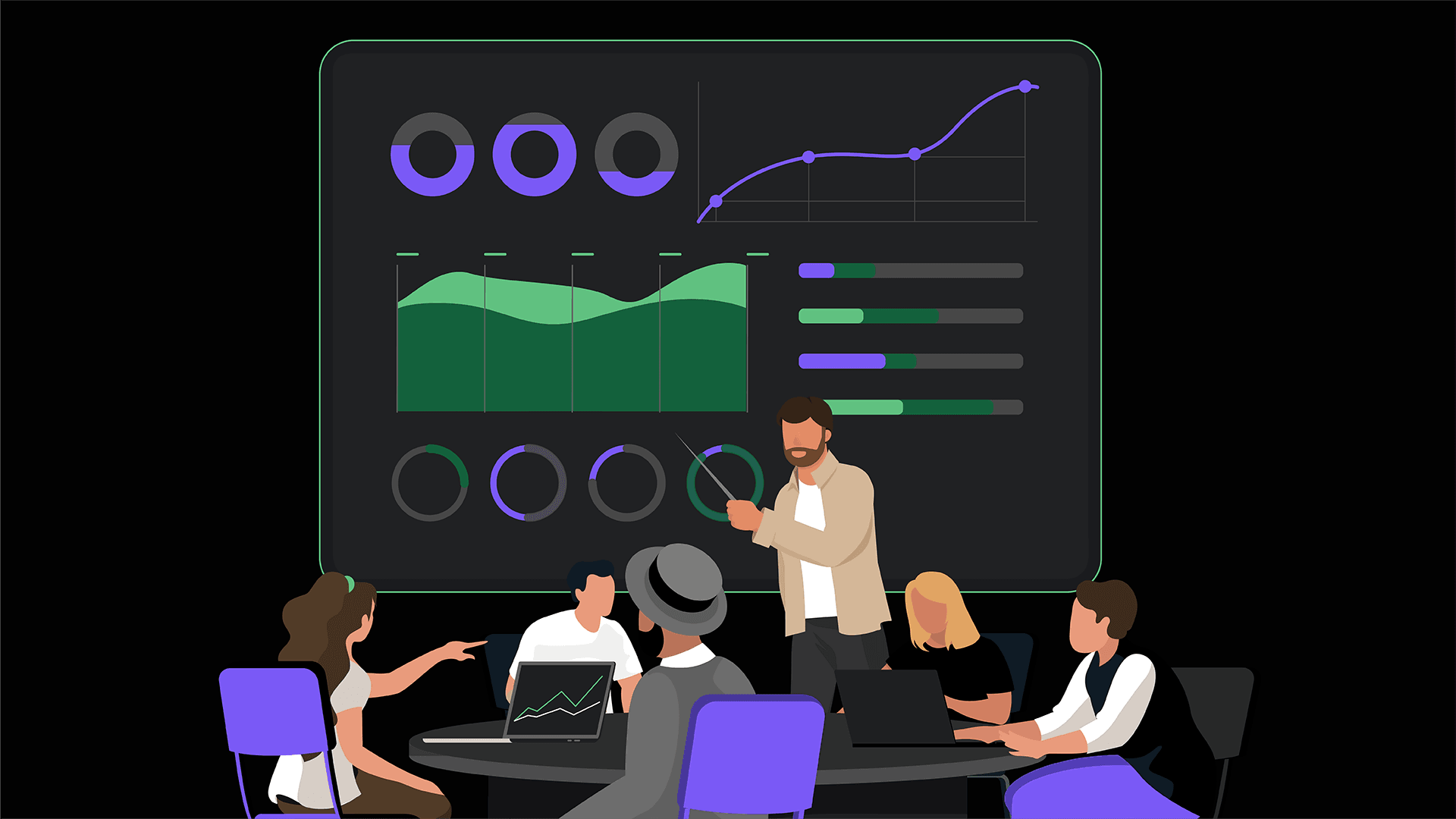
Let's dive into the average conversion rates by industry, from Google search ads specifically.
- Agency: 6.05%
- Animals & Pets: 16.3%
- Apparel / Fashion & Jewelry: 2.59%
- Arts & Entertainment: 4.47%
- Attorneys & Legal Services: 9.27%
- Automotive — For Sale: 5.72%
- Automotive — Repair, Service & Parts: 12.61%
- B2B Services: 3.5%
- B2B Tech: 1.7%
- B2B eCommerce: 3.2%
- B2C eCommerce: 8.25%
- Beauty & Personal Care: 7.94%
- Business Services: 6.8%
- Career & Employment: 4.21%
- Cosmetics: 2.3% (Note: This was specific to one source)
- Dentists & Dental Services: 10.4%
- Education & Instruction: 9.61%
- Events & Leisure: 12.9%
- Family Support: 9.0%
- Finance & Insurance: 6.47%
- Furniture: 2.91%
- Health & Fitness: 11.0%
- Healthcare: 6.5%
- Home & Home Improvement: 10.22%
- Industrial & Commercial: 8.64%
- Media & Entertainment: 18.1%
- Personal Services: 9.61%
- Physicians & Surgeons: 16.13%
- Professional Services: 9.3%
- Real Estate: 4.36%
- Restaurants & Food: 10.05%
- Shopping, Collectibles & Gifts: 5.20%
- Software as a Service: 9.5%
- Sports & Recreation: 5.94%
- Travel: 7.54%
🛒 The average conversion rate for B2C Ecommerce was 2.0%.
Our Methodology
Here's how we calculated the conversion rate data.
- Our data team analyzed 20+ independent conversion rate data sources and studies from respected sites like WordStream, Search Engine Journal and Unbounce)
- We put together every primary category and compiled the data in there from each independent sources.
- We then calculated the average conversion rate for each industry, using the average blended rate from each source.
- This should give us the best possible estimate of reliable data using all available data sources.
Important Notes:
- It combines data from various sources and may not be the most up to date information.
- Conversion rates are averages and estimates. Your results will vary on a whole host of factors.
- Use this information as a starting point and conduct further research within your target industry for more precise data.
High vs. Medium vs. Low Conversion Rate Industries
Based on the available data, we've placed each industry into a category based on a conversion rate threshold.
Low PPC Conversion Rate Industries (Below 3%) :
- B2C Ecommerce (Blended): 2.00%
- Apparel / Fashion & Jewelry: 2.585%
- Automotive: 2.00%
- B2B Tech: 1.70%
- Cosmetic and Dental: 2.30%
- Furniture: 2.91%
Medium PPC Conversion Rate Industries (Between 3% and 8%):
- Agency: 6.05%
- Arts & Entertainment: 4.465%
- Automotive — For Sale: 5.72%
- B2B Services: 3.50%
- B2B eCommerce: 3.20%
- Beauty & Personal Care: 7.94%
- Business Services: 6.80%
- Career & Employment: 4.21%
- Finance & Insurance: 6.47%
- Financial: 4.30%
- Healthcare: 6.50%
- Industrial: 5.60%
- Legal: 7.90%
- Real Estate: 4.36%
- Shopping, Collectibles & Gifts: 5.195%
- Sports & Recreation: 5.94%
- Travel: 7.54%
High PPC Conversion Rate Industries (Above 8%):
- Animals & Pets: 16.30%
- Attorneys & Legal Services: 9.27%
- Automotive — Repair, Service & Parts: 12.61%
- B2C eCommerce: 8.25%
- Dentists & Dental Services: 10.40%
- Education & Instruction: 9.61%
- Events & Leisure: 12.90%
- Family Support: 9.00%
- Health & Fitness: 10.99%
- Home & Home Improvement: 10.22%
- Industrial & Commercial: 8.64%
- Media & Entertainment: 18.10%
- Personal Services: 9.61%
- Physicians & Surgeons: 16.13%
- Professional Services: 9.30%
- Restaurants & Food: 10.05%
- Software as a Service (SaaS): 9.5%
🧠 Consider Conversion Goals
It would be incredibly irresponsible of us not to mention that this data will be impacted by different conversion goals.
For example, the SaaS industry with a 9.5% conversion rate sounds incredibly high.
👉 However, most SaaS companies running paid ads will have multiple conversion goals such as:
- Fill out lead form
- Request a demo
- Free trial
So all of these goals will be contributing to that 9.5% conversion number!
Compare that to Ecommerce, where the only conversion goal really measured is purchasing customers.
That's why Ecommerce is typically lower (2% blended across different Ecommerce categories) although Ecommerce is notoriously competitive as well, with so many different product types usually on the market in any given category.
PPC Conversion Rates By Platform
- Average Conversion Rate (Search Network): 8.2%
- Average Conversion Rate (Google Display Network, GDN): Varies by industry but generally lower than 1%.
- Google Shopping Conversion Rate: 1.91%, but varies significantly by industry.
- Strengths: Keyword-based searches with incredibly high-intent! Most effective for direct searches related to products or services.
- Recommended For: All industries, particularly those where there's a well established search volume.
Bing (Microsoft Ads)
- Average Conversion Rate: 7.6%
- Strengths: Lower cost per click than Google (approx 33%), an older and more affluent user base.
- Recommended For: Industries with longer sales cycles or targeting older demographics.
We love Bing because it has such an affluent user base, and accounts for a ton of desktop users as well.
Facebook & Instagram
We're counting both Facebook & Instagram here, because they fall under Meta advertising, and your ads will be displayed to both platforms equally - The platform displays ads depending on where it thinks it will drive the most conversions.
- Average Conversion Rate: Overall average is around 9.21
- Cost Per Conversion: Typically lower for industries like Education, Fitness & Ecommerce.
- Strengths: Incredible for "Discovery" and raising awareness of new products.
- Recommended For: Businesses looking to leveraeg Meta's incredible targeting options to find customers that wouldn't have otherwise known about your product.
- Average Conversion Rate: 0.9%
- Strengths: Real-time engagement and lots of opinions & tactics shared there.
- Recommended For: Brands with strong voices, good educational content, time-sensitive promotions.
YouTube
- Average Conversion Rate: 0.5%
- Strengths: Large audience & video ads highly engaging.
- Recommended For: Products or services that benefit from storytelling, those that have budget to invest in video production!
YouTube in our opinion represents a massive opportunity for low-cost ads.
- Average Conversion Rate: 1.5%
- Strengths: Large audience, predominantly female, wealthy.
- Recommended For: Certain types of product categories e.g. homeware can thrive on Pinterest!
TikTok
- Average Conversion Rate: 1.1%
- Strengths: Large, very young Gen-Z audience. Growing platform! Great targeting.
- Recommended For: Most DTC brands have success with discovery on TikTok. You do need to have strong creatives in place to succeed here though.
- Average Conversion Rate: 2-3% (data is inconclusive)
- Strengths: Monstrous audience, highly niche-specific targeting based on Subreddits.
- Recommended For: Brands that are able to craft content that fit neatly in, and large brands looking to expand reach to more platforms.
How To Achieve Better Conversion Rates
Improving your conversion rates for ads comes down to 4 key factors, which we'll explain in more detail.
- Improve Landing Pages
- A/B Testing
- Remarketing campaigns
- Lead nurturing
Conversion Rate is Everything at PPC.io
At our PPC.io, we're obsessed with driving improved conversion rates for our clients.
We think that most PPC agencies like to optimize everything up to the point of sending traffic to their client's website, and then blame their client's website design or sales process for poor results.
But that's not us.
We look at every piece of the customer journey, including your offer & landing page design, in order to drive the highest return from your advertising spend.
If you'd like to chat about PPC or paid ads, get in touch.
1) Improve Landing Pages
Your landing pages can make or break your PPC campaigns, and they have the single biggest impact on your PPC conversion rate.
When someone clicks on your PPC ad, they expect to find exactly what they were promised - a good landing page delivers on that promise and guides users toward making a purchase.
If you have never audited your landing pages, then use a landing page analyzer to quickly come up with possible improvements. This should help lift your conversion rates!
When your landing page is optimized and your message is spot-on, it can increase your landing page conversion rate.
Here’s how to set up a high-converting landing page:
💥 Step 1: Define your conversion goals
Before diving into optimization, define clear and measurable goals for your landing page. Are you aiming to collect email addresses, drive product sales, or encourage sign-ups for a webinar?
Having a well-defined conversion rate goal sets the stage for effective optimization.
💥 Step 2: Craft your copy
Your landing page headline and copy should be concise, engaging, and directly aligned with your PPC ad's message.
The below example from Mailchimp clearly communicates the value proposition and benefits of the platform:
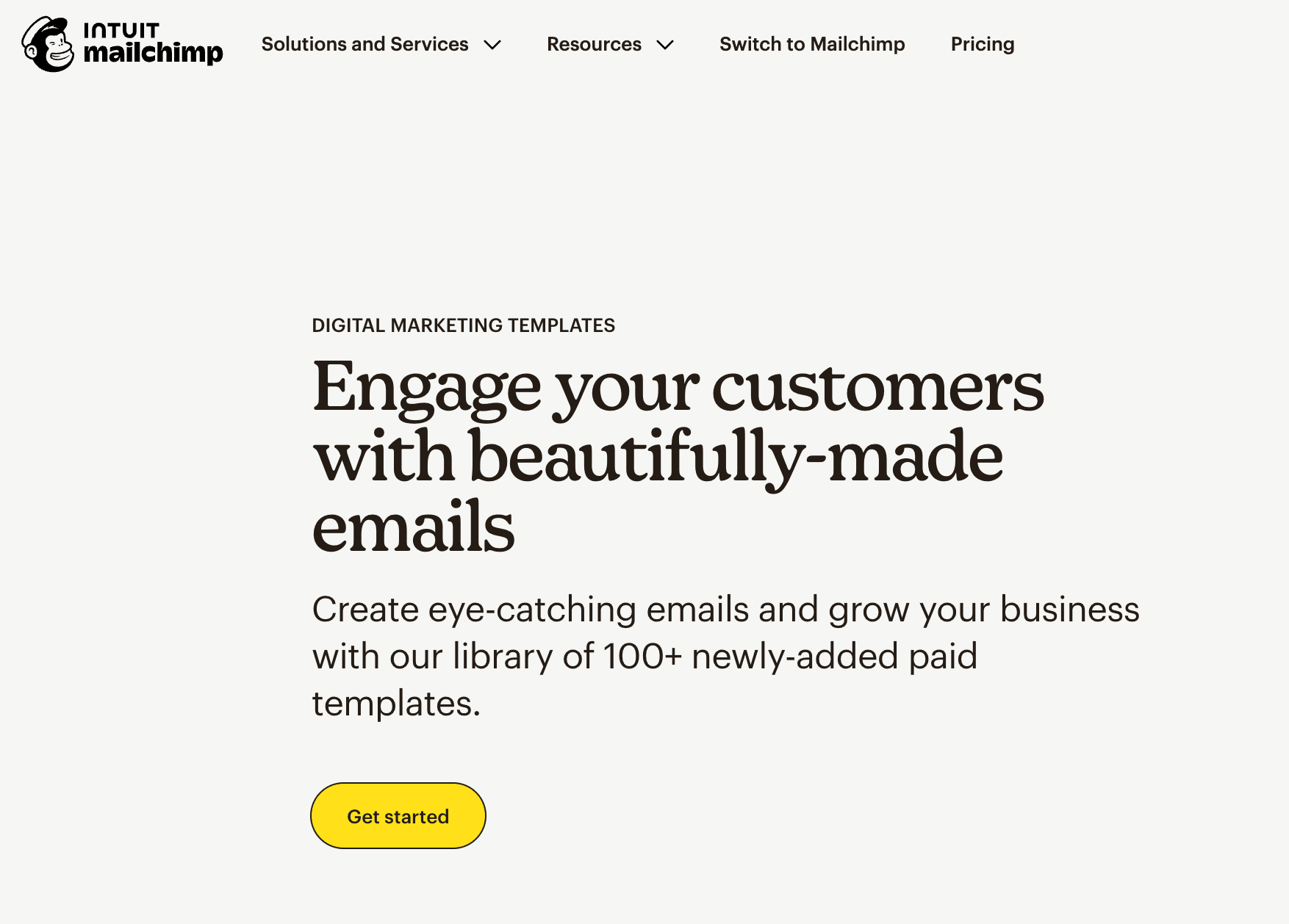
💥 Step 3: Create an attention-grabbing design
Aesthetics matter. Your landing page design should be clean, uncluttered, and visually appealing. Use high-quality images, graphics, and videos to enhance the user experience.
Be sure to highlight key elements such as the call-to-action (CTA) button.
For example, the Calm landing page features tranquil photography, compelling copy, and an uncluttered design to grab attention. The CTA “Try Calm for Free” lets users know they can sign up for a trial before buying:
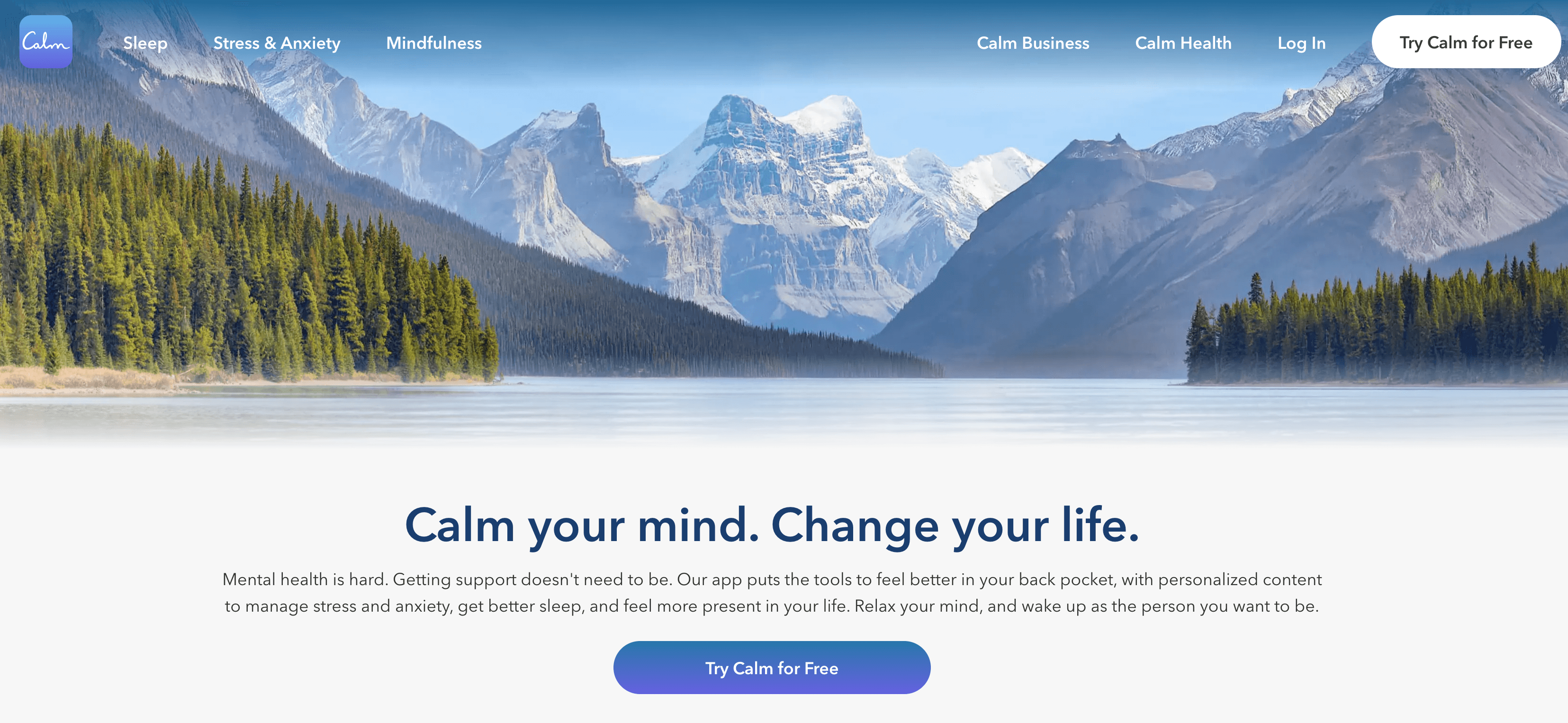
💥 Step 4: Optimize load times
If your landing page includes a form, keep it simple. Ask for only essential information to reduce friction. The fewer fields visitors need to fill out, the more likely they are to complete the form.
In the example below from ClickUp, users are only required to fill out three fields to create an account:
💥 Step 5: Simplify forms
If your landing page includes a form, keep it simple. Ask for only essential information to reduce friction. The fewer fields visitors need to fill out, the more likely they are to complete the form.
In the example below from ClickUp, users are only required to enter their email to get started.
We should note that simple forms like this may be more susceptible to click fraud.
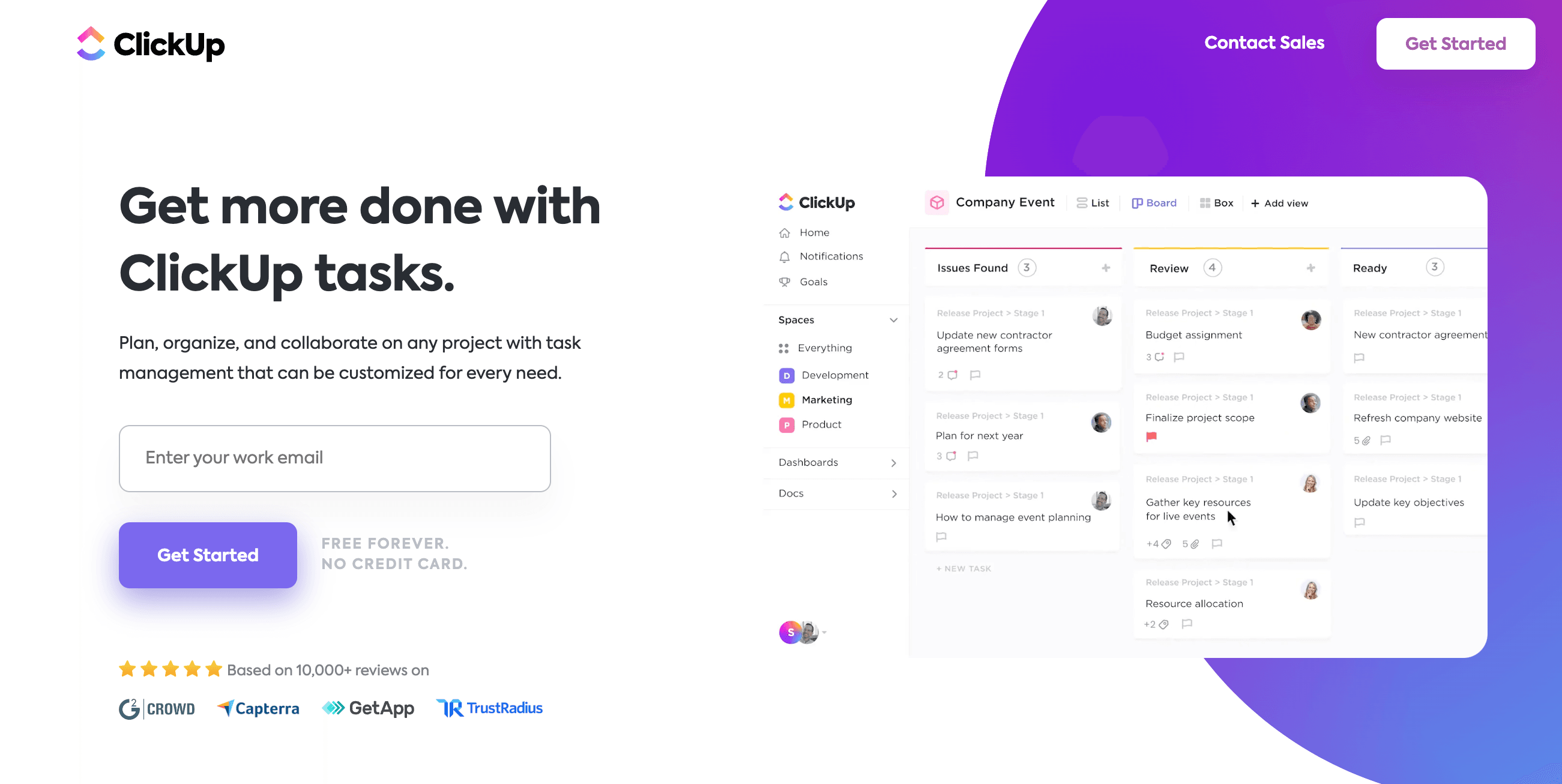
💥 Step 6: Craft your CTAs
Your CTA (call to action) button should stand out and use action-oriented language.
Make it clear what action you want visitors to take, whether it's "Get Started," "Subscribe Now," or "Buy Now." If you offer a free trial, you should include this in your CTA. For example, “Get a Free Trial” or “Subscribe for Free”.
The website builder Wix has an illustrated header with a strong CTA, and additional CTAs appear throughout their landing page:
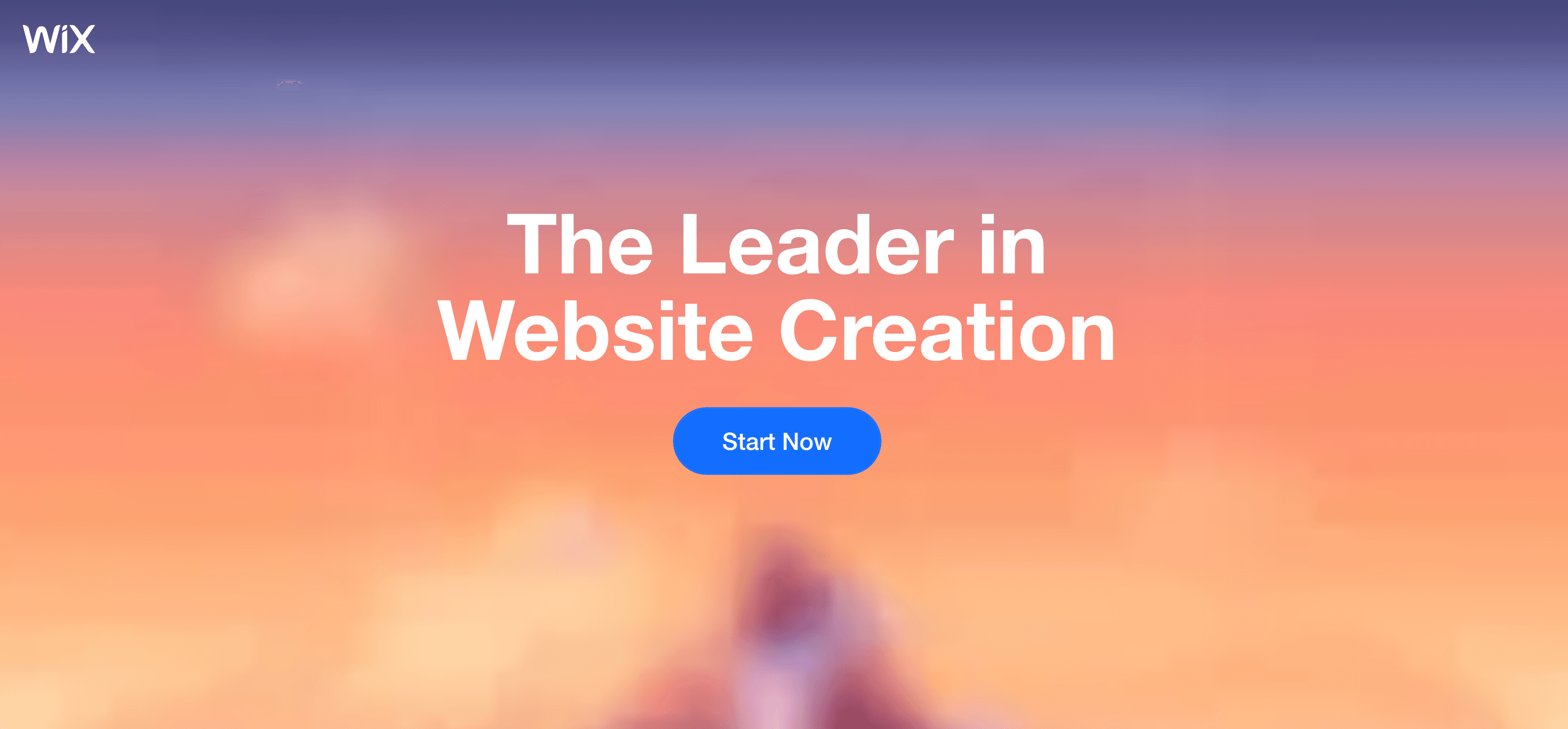
💥 Step 8: Implement A/B testing
As mentioned, you should A/B test your PPC ads. However, A/B testing is also a powerful tool for optimizing landing pages.
You may want to test:
✅CTAs.
✅Messaging.
✅Landing page layouts.
✅Images and graphics.
✅Forms.
Once you’ve created your landing page variations, there are countless tracking tools to measure the performance of each, including:
✔️AB Tasty: A user-friendly tool suitable for beginners in conversion optimization. It includes features like A/B testing, funnel testing, and advanced targeting options.
✔️Unbounce: Unbounce is a dedicated landing page A/B testing tool with a user-friendly builder for high-converting landing pages.
✔️Kameleoon: Kameleoon is an AI-driven A/B testing tool known for its predictive targeting and real-time segmentation capabilities.
✔️Crazy Egg: Crazy Egg offers heatmap and A/B testing features, along with user behavior tracking and analysis for website optimization.
💥 Step 9: Analyze Performance
Regularly analyze the performance of your landing pages using analytics tools. Monitor metrics like conversion rates, bounce rates, and click-through rate.
Then, use the insights gained to refine your landing page optimization efforts.
2) A/B Test Everything
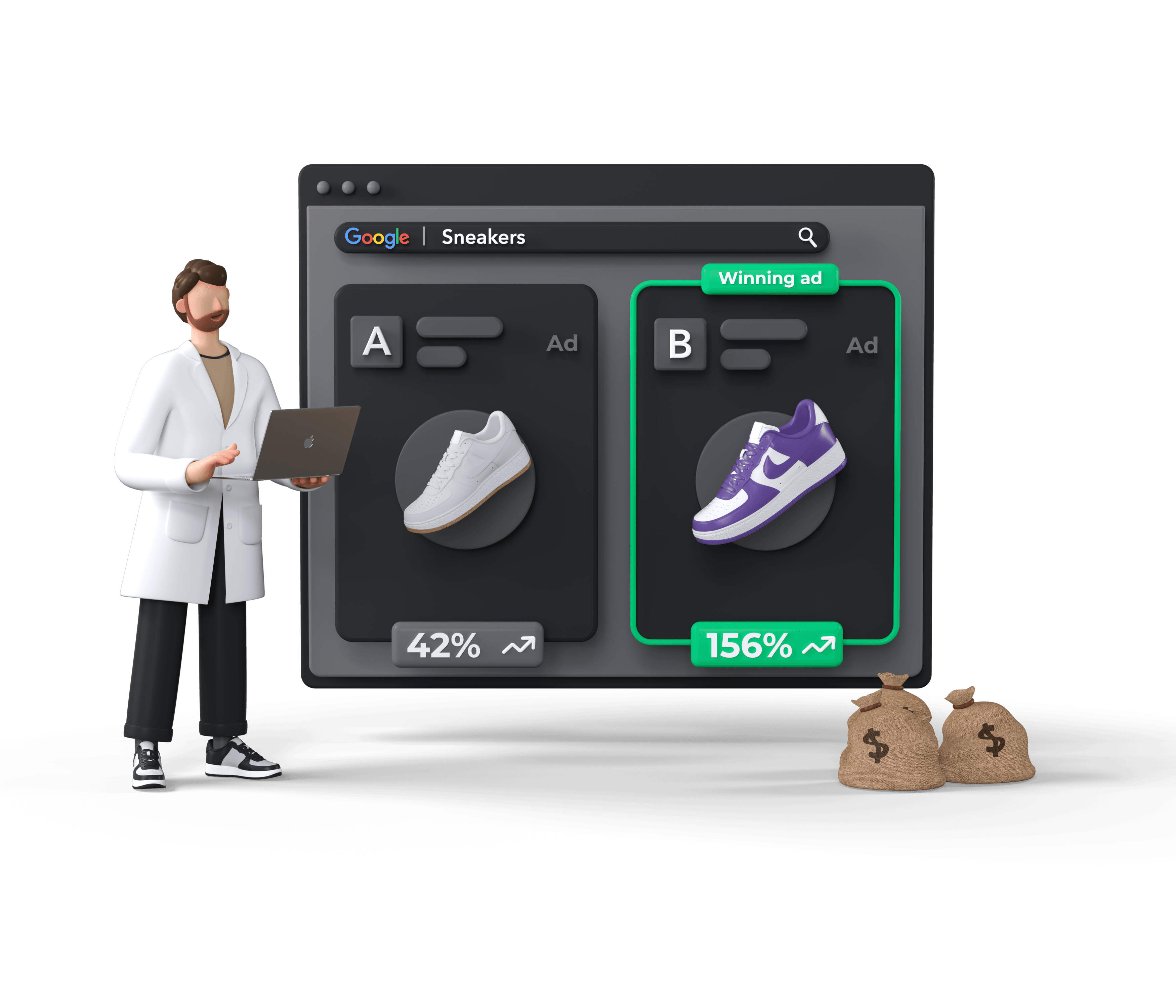
A/B testing, also known as split testing, is a fundamental technique for optimizing your PPC campaigns and improving your conversion rate.
Most people think that conversion rate is all about what happens after a user clicks through to your website.
But that's not true.
Your ad copy, bidding strategy, keyword targeting and multiple other factors have a direct impact on your PPC conversion rate. These are all things you should be auditing regularly using a reliable tool.
Here’s a quick guide on how to A/B test your campaigns.
For a more in-depth guide, check out our PPC testing article.
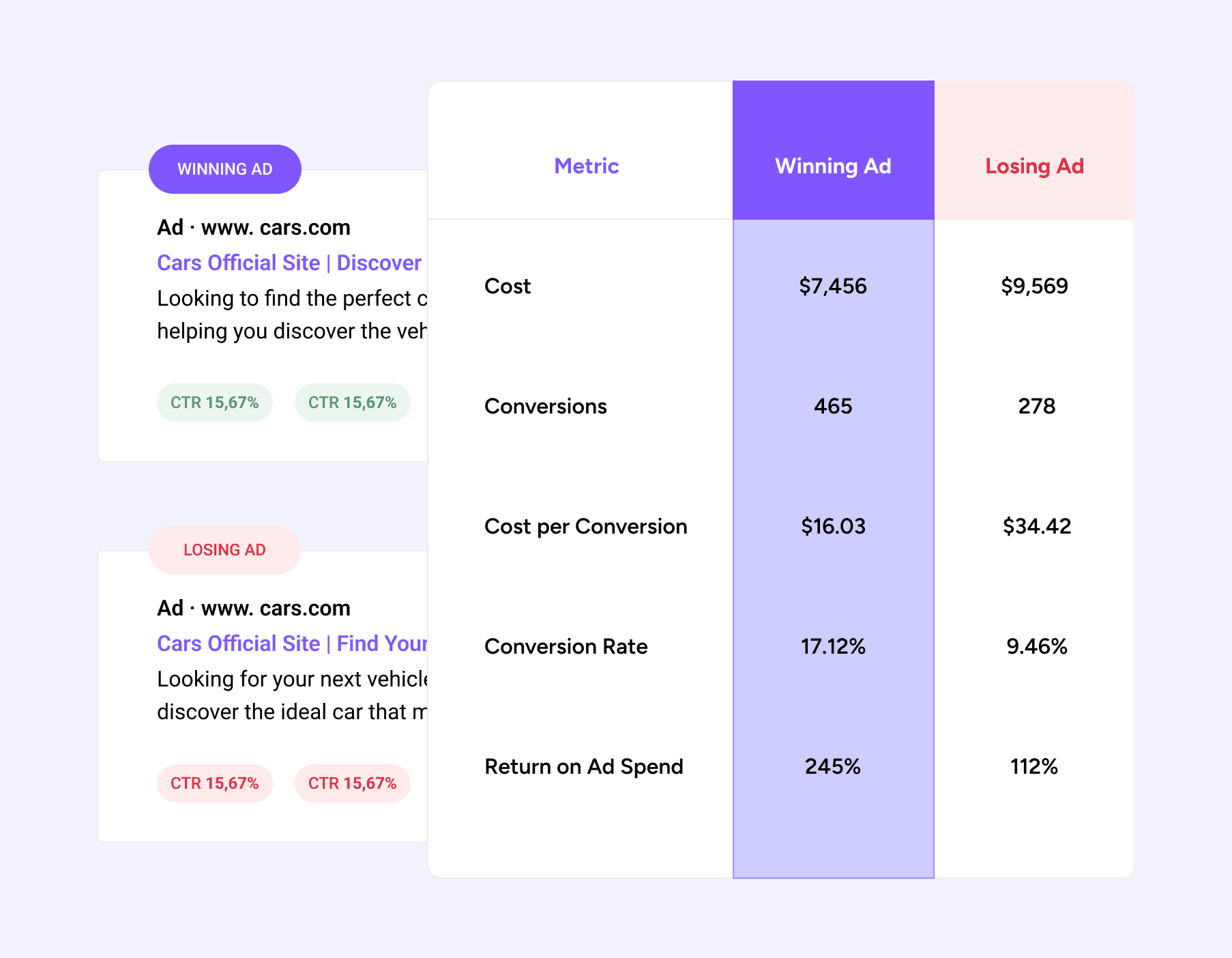
💥Step 1: Identify the element to test
Common elements to test include:
✔️Ad copy: Test different headlines, descriptions, or calls to action.
✔️Images: Experiment with different image assets on your ads.
✔️Keywords: Try out various keywords or keyword match types to see what works best.
✔️Bidding Strategy: Test different bidding strategies e.g. Target ROAS vs. Target CPA.
✔️Ad formats: Test the performance of different ad types, such as Google Shopping Ads, GDN banners, and search ads.
💥 Step 2: Create variations
Develop two distinct versions for the element you're testing.
For example, if you're testing ad copy, create two variations of the ad with changes in the headline, description, or call to action.
💥Step 3: Split your audience
Randomly divide your audience into two equal groups. One group will be exposed to Version A (the control), while the other group will see Version B (the variation).
This random division is important to ensure that both groups are representative of your overall audience.
💥 Step 4: Implement tracking
Ensure you have accurate tracking in place on Google or Facebook Ads to measure the performance of both versions. Key metrics you should monitor include:
✅Conversion rate
✅Click-through rate (CTR)
✅Cost-per-click (CPC)
✅Impressions
✅Engagement metrics (on Facebook)
✅ Quality Score (on Google Ads)
💥Step 5: Run the test
Launch both versions of your PPC campaign simultaneously. This ensures that external factors, such as seasonality or market trends, don't impact the results.
Next, let the test run long enough to collect data that is statistically significant.The duration will depend on factors like your campaign's typical traffic volume and conversion rate.
It’s important not to make any changes to your PPC campaign during the testing period. This includes tweaking ad copy, keywords, or landing pages.
Modifying elements during the test can make it difficult to accurately assess the impact of your A/B test.
💡 What Is Statistically Significant Data?
When you're running an A/B test in a PPC campaign, you want to be sure that the results you're seeing actually mean something.
So, how do you ensure your data is statistically significant?
- Sample size: You need to collect a big enough sample size to determine trends and patterns. Whether you’re measuring conversions, clicks, or impressions, your sample size should be large enough to mitigate the impact of random variations.
- High confidence level: Typically, you want to be at least 90% confident in the results of your test.
- Low P value: The P value quantifies the probability that the differences could have occurred by random chance. The lower the P value, the higher the confidence level.
This might seem complex, but luckily, there are online tools you can use to make sense of your data, including Neil Patel’s A/B Testing Calculator, AB Test Guide, and AB Tasty’s Sample Size Calculator.
3) Remarketing Campaigns
If you are not actively running remarketing campaigns to supplement your 'standard' PPC campaigns, then you're making a mistake.
Remarketing campaigns allow you to target people who already visited your advert before, but didn't yet turn into a paying customer.
We've put together an in-depth guide on PPC remarketing.
I strongly recommend you check it out for later reading!
Think about it - If you're spending say $10,000 per month on advertising to help people discover your brand, then you absolutely want to make sure that those people are seeing your advert multiple times, especially if they've already visited your website!
The benefits of PPC remarketing:
- You can slowly build trust with customers who visited your website already.
- You can take them on a steady conversion path before showing them an offer they can't refuse.
- You can show them content and videos to help them understand your product or service more.
- You instil brand recall in your customer.
- You can use dynamic remarketing to show them the specific product or piece of content they were reading on your website.
All of these things are clearly demonstrate the power of remarketing.
According to a WebFX study, remarketing can improve the efficacy of ad campaigns by 400%.
4) Lead Nurturing
Finally, let's talk about lead nurturing.
This is probably the single most underrated tactic being used right now by marketers to help improve their conversion rate.
Lead Nurture Example - Crossfit Gym 💪
Let's imagine we're a crossfit gym, and we want to implement lead nurturing strategies.
👉 We want to maximize our chances of converting visitors who visit our page, so we implement the following lead nurture tactics:
- SMS Marketing - If someone fills out a form, we send them automated follow up text messages to come down to the gym and remind them to book in a trial class.
- Email Marketing - Again, if someone fills out a form or seems interested, we drop them a series of emails aimed at teaching them more about our gym, membership options and a friendly reminder to come and check out the gym.
- CRM Integration - We make sure the lead is placed into our sales CRM system, so that our sales team can manually pick up the phone and talk to the potential customer in person, building another layer of trust.
- Behavioral Trigger Emails - For example we notice that the customer has joined a trial class but hasn't yet signed up, we can automatically send them an email encouraging them to become a fully fledged member, and give them a special offer to make it more enticing.
- Post-Sale Nurturing - Even after they have become a member, we can still send them regular emails to let them know about any special offers in order to maximize their customer lifetime value. After all, increasing our average order value is one of the best ways to increase our overall return on ad spend!
Just think about it yourself for a moment.
How many times have you left your details on a website, only to never be contacted again?
Did you become a customer of that company? Chances are no.
On the other hand, consider a time where they nurtured you like a Grandmother nurtures her Grandaughter.
They made you feel welcomed, and gave you all of the information required to help you become a customer of theirs.
🧠 Chances are those are the brands that you remember for their great customer service and attention to detail.
Summary
We've looked at the average PPC conversion rates by industry and platform, and all of the nuances in between.
I want to stress that these are just that - averages - and there's so much you can do as PPC marketers to become the outlier in your industry, and achieve conversion rates that blow your competition out the water.
